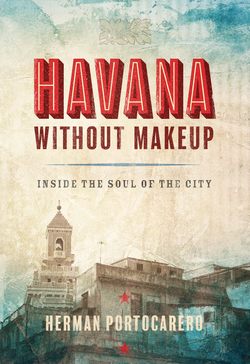Читать книгу Havana without Makeup - Herman Portocarero - Страница 17
На сайте Литреса книга снята с продажи.
Оглавление10.¡SALSA!
At the Teatro de las Américas on Calle Galeano, a well-preserved district of Centro Habana, Havana’s best salsa orchestra, Los Van Van, is in concert. The orchestra was started in the 1960s, when Cuban musicians got tired of traditional music, but wanted to keep its essential rhythmic structures, which they blended with modern soul and pop. Until his passing in May 2014, the band was led by its founder, the legendary Juan Formell, whose songwriting over the years had become a true chronicle of life in Havana with all its ups and downs, wrapped in some of the most rousing music ever performed.
In remembrance of Formell, the song “Te pone la cabeza mala” is now played with an extra long introduction by Los Van Van’s signature horns section, sustained by diabolically virtuoso conga rhythms. Members rise from their seats, and bodies come whirlingly alive in a physical adoration of the rhythm dedicated to the late Formell and all the good times he brought his people. The orishas immediately come into play with the lyrics of the song. They speak of the Nigerian and Congolese roots of the music, inherited by all Cubans as children and grandchildren of Africa.
The collective musical ecstasy goes back to the toquesantos – the use of the congas to invoke the spirits – but the fun part can also be traced at least to the eighteenth century, when chroniclers of the scandalous life in the port of Havana – just like Ortiz, who was already fascinated by what they wished to censor – described the early Cuban music such as the guaracha, as “the most viscerally enticing rhythms of three worlds” – inducing all kinds of mischief, of course.
While Los Van Van have Havana in a trance, at the same moment in New York, salsa diva La India may well be singing her odes to Yemaya and Ochún, the most revered female orishas.
Visitors and tourists may simply dance to salsa and the more pop-related timba, but to understand what the music is about, one needs to explore its religious roots. The music crosses over and again the thin line between sensual dancing as a mating ritual and being possessed by the orishas.
Another salsa superstar, José Luis “El Tosco” Cortés and his NG La Banda, illustrates the mysterious sex change transforming Saint Barbara into the highly virile Changó. El Tosco himself, onstage, almost incarnates the lyrics. A very macho presence, when switching from Changó to Santa Bárbara, he becomes the very talented classical musician that he is, and serenades the virgin saint not on the proverbial lyre but with sophisticated flute solos.
The camouflage of Santería themes in popular music probably helped la religión to survive times of official disapproval. It also maintained the festive and colorful aspects of the Yoruba beliefs and rites. Each good salsa concert gives a remote idea of what the Día de Reyes carnival was like in slavery days.
